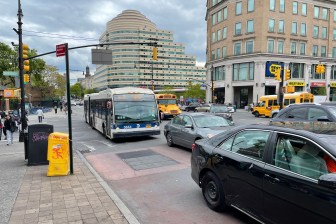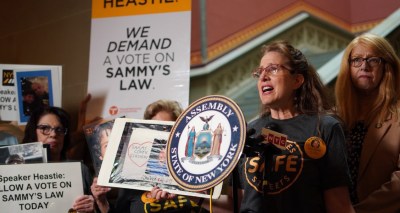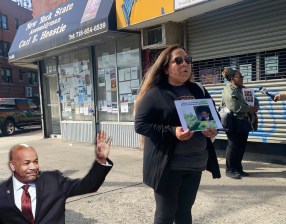Smart Growth Leader Tells Planning Commission: NYC Can Do Better
 According to the Smart Growth Manual, "It is the planner’s role not to incentivize driving, but to create a transit and pedestrian experience that makes not driving a pleasure."
According to the Smart Growth Manual, "It is the planner’s role not to incentivize driving, but to create a transit and pedestrian experience that makes not driving a pleasure."New York may be the most transit-rich city in the nation, but that doesn’t mean big changes to the city’s planning policies aren’t necessary. That’s the message Jeff Speck, a leader of the New Urbanist movement and co-author of the newly released Smart Growth Manual, delivered yesterday to the City Planning Commission.
Presenting at the invitation of Planning Commissioner Amanda Burden, Speck gave New York’s top land-use policy makers advice on how to make the city more walkable and livable. He was quick to note that New York is already among the greenest cities in America,
simply by virtue of its density and low rate of driving. Even so, his presentation outlined how the city often fails to
capitalize on its transit infrastructure. Perhaps most importantly,
Speck repeatedly identified ways in which the city sabotages the
sustainability of its transportation system through its parking policy.
While commissioners responded enthusiastically to Speck’s vision, one exchange revealed the strong influence of demands for plentiful, cheap parking on their decisions.
Commissioner Betty
Chen asked Speck to respond to the two arguments about parking she
hears most frequently. The first is that parking spaces are necessary
to lure higher-income residents to a neighborhood; the second is that, as she put it:
Certain
people will own cars and drive no matter what, no matter what public
transportation is available. Maybe it’s because they live in a part of
town that’s not close to public transportation, or they want to bring
their family for shopping or a Broadway show, or it doesn’t make sense
for work… So you should provide parking for those people because
otherwise they’ll be circling the block and leading to congestion on
the streets.
While Chen
— and Burden, who asked a more general variation on the same question
— showed interest in moving away from automobile-centric development,
the question certainly reveals the obstacles standing in the way of
more walkable, sustainable patterns of development in New York. (For more on the damage to New York caused by parking minimums, Transportation Alternatives’ 2008 report, "Suburbanizing the City," is essential reading.)
Upon learning that many parts of the city still had parking minimums for new construction, Speck responded that there is almost never any reason to force developers to build more parking than they want to. While providing the caveat that minimums are a "neighborhood-by-neighborhood decision," Speck illustrated the perils of parking minimums with the hundreds of empty spaces — parking spots that were required by law — in Washington DC’s otherwise successful DC USA development. Unfortunately, the Planning Commission has buttressed New York’s parking minimums as recently as last November.
Speck also criticized New York’s under-use of transit stations as development centers. He displayed a satellite photograph of the St. George Terminal of the Staten Island Ferry, showing a massive surface parking lot adjacent to a transit hub which serves 65,000 passengers daily:
 Image: Google Maps
Image: Google MapsOn a site with such direct access to Lower Manhattan, laying asphalt instead of building a high-density development is a terrible misallocation of a very scarce resource.
Christine Berthet, the co-founder of the Clinton/Hell’s Kitchen Pedestrian Safety Coalition who has squared off with the planning commission over parking policy before, attended Speck’s presentation. While she was optimistic about the general tone of the discussion, she was disappointed in what came next: The commission certified a special permit for a developer to build about 50 percent more parking than the law would otherwise allow. As Berthet put it, "Commissioner Chen was really looking for answers on parking and the strong answer she got was that you just need to say no to the developers. That’s not an answer the Planning Commission is ready for."





